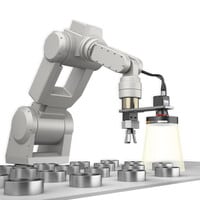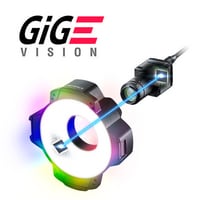Automating with
What is Machine Vision?
Machine Vision refers to the use of industrial cameras, lenses, and lighting to perform automated, visual inspection of manufactured products.
Machine vision provides a fast, reliable way to inspect parts inline. With machine vision, every part coming down a high-speed line can be imaged and inspected, to ensure 100% quality control.
In the factory processes, machine vision can automate various inspections such as appearance inspections that check defects and faults, presence-absence checks, product type verifications, measurements, code readings.
Machine Vision FAQ
The World's Most Complete Vision Lineup
KEYENCE is proud to offer the most complete machine vision lineup of any automation supplier, from vision sensors with integrated lighting, to modular vision systems supporting area cameras, line scan and 3D cameras, and laser profilers. Award-winning hardware and advanced software algorithms combine to make KEYENCE machine vision the most stable solution for appearance and defect inspection, counting, positioning, measurement, and code reading applications; while built-in troubleshooting and maintenance tools speed up installation and decrease down-time. Explore this page for industry and application specific examples, or to learn more about any of our current vision technologies.
Our Latest Machine Vision Technologies
-

- Pattern Projection Lighting
- Simultaneous 2D and 3D imaging for all standard vision applications.
-

- LumiTrax Lighting
- Directional lighting enhances height features and reduces glare, while minimizing the effect of ambient light.
-

- Multi-Spectrum Lighting
- Versatile lighting with 8 available colors to account for part variation with LumiTrax compatibility in all colors.
-

- LED Lighting
- High-intensity lighting to ensure high quality image capture every time.
-

- 3D Vision-Guided Robotics
- Automated, high performance 3D bin picking. Quick and easy to deploy with Auto-Calibration, Robot Path Planning, and Picking Simulator.
-

- 2D Vision-Guided Robotics
- Machine vision systems for pick and place applications, with direct connection and automatic calibration for most major robot manufacturers.
-

- Inline 3D Cameras
- High-accuracy appearance and dimension inspection for products and materials of all types.
-

- Line Scan Cameras
- High-speed cameras for inspection and defect analysis on large parts, continuous webs, and cylinders.
Our Machine Vision Platforms
-

- Intuitive Machine Vision
CV-X series - High Performance, Icon-driven system with easy-to-use tools for simple setup by any user.
- Intuitive Machine Vision
-

- Customizable Machine Vision
XG-X series - Flexible programming interface with 3D and linescan capabilities for high-quality, high-speed inspection and control.
- Customizable Machine Vision
-

- GigE PC-Based Machinve Vision
VJ series - High-speed camera and lighting synchronization algorithms provide imaging unlike anything before.
- GigE PC-Based Machinve Vision
Want to learn more about KEYENCE Machine Vision?
Machine vision has now become necessary in automation to improve efficiency and throughput by detecting defects and eliminating scrap.




















